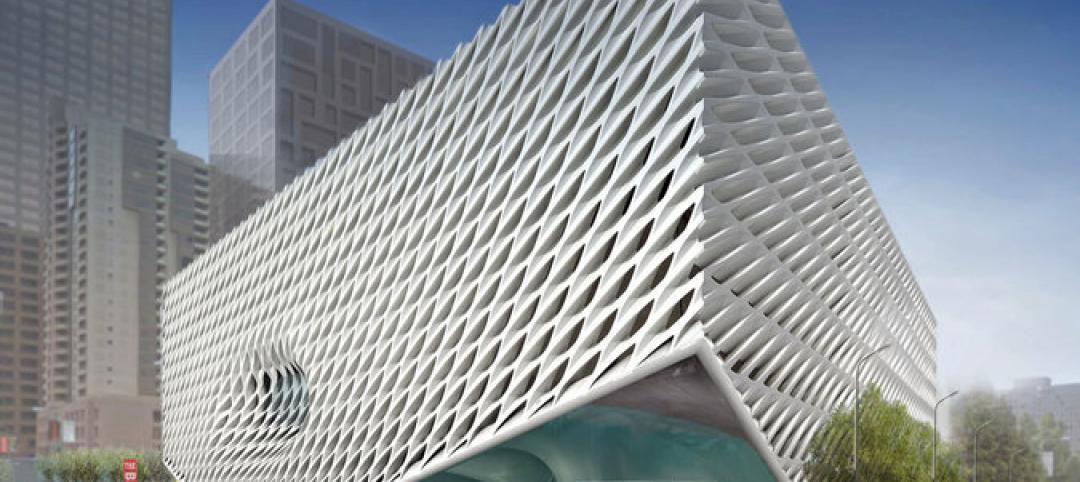The first rendering of the National Medal of Honor Museum, which will be located in Arlington, Texas, has been unveiled.
Charlotte Jones, the National Medal of Honor Museum Foundation (NMOHMF) Chairman of the Board and Dallas Cowboys Executive Vice President, National Medal of Honor Museum (NMOHM) President and CEO Joe Daniels, and Mayor Jeff Williams, President of the Arlington Tomorrow Foundation, provided a joint update on the project and released the first architectural rendering of the future Museum. The National Medal of Honor Museum will be dedicated to honoring the 3,507 recipients of the award, which is the United Sates’ highest award for valor in combat.
The design features a steel slab that “floats” above the rest of the structure. It is connected to the spaces below, which feature large expanses of glass overlooking a reflecting pool, by two spiraling pathways.
The museum will offer an experience that draws personal and emotional connections to Medal of Honor recipients and their stories. It will feature permanent interactive experiences and rotating exhibitions.
The project will also include an education center aimed at youth character development. The Character Development Program, which has been designed by teachers, will provide students with opportunities to explore the concepts of courage, sacrifice, patriotism, citizenship, integrity, and commitment, and how these values can be exemplified in daily life, according to the Medal of Honor Museum’s website.
The National Medal of Honor Museum is scheduled for a 2024 grand opening.
Related Stories
| Jun 18, 2014
Arup uses 3D printing to fabricate one-of-a-kind structural steel components
The firm's research shows that 3D printing has the potential to reduce costs, cut waste, and slash the carbon footprint of the construction sector.
| Jun 16, 2014
6 U.S. cities at the forefront of innovation districts
A new Brookings Institution study records the emergence of “competitive places that are also cool spaces.”
| Jun 13, 2014
First look: BIG's spiraling museum for watchmaker Audemars Piguet
The glass-and-steel pavilion's spiral structure acts as a storytelling device for the company's history.
| Jun 12, 2014
Tod Williams Billie Tsien Architects' design selected for new UCSC facility
The planned site is a natural landscape among redwood trees with views over Monterey Bay, a site that the architects have called “one of the most beautiful they have ever worked on.”
| Jun 12, 2014
Austrian university develops 'inflatable' concrete dome method
Constructing a concrete dome is a costly process, but this may change soon. A team from the Vienna University of Technology has developed a method that allows concrete domes to form with the use of air and steel cables instead of expensive, timber supporting structures.
| Jun 11, 2014
David Adjaye’s housing project in Sugar Hill nears completion
A new development in New York's historic Sugar Hill district nears completion, designed to be an icon for the neighborhood's rich history.
| Jun 9, 2014
Green Building Initiative launches Green Globes for Sustainable Interiors program
The new program focuses exclusively on the sustainable design and construction of interior spaces in nonresidential buildings and can be pursued by both building owners and individual lessees of commercial spaces.
| Jun 9, 2014
Eli Broad museum files $19.8 million lawsuit over delays
The museum, meant to hold Eli and Edythe Borad's collection of contemporary art, is suing the German company Seele for what the museum describes as delays in the creation of building blocks for its façade.
| Jun 4, 2014
Want to design a Guggenheim? Foundation launches open competition for proposed Helsinki museum
This is the first time the Guggenheim Foundation has sought a design through an open competition. Anonymous submissions for stage one of the competition are due September 10, 2014.
| May 29, 2014
7 cost-effective ways to make U.S. infrastructure more resilient
Moving critical elements to higher ground and designing for longer lifespans are just some of the ways cities and governments can make infrastructure more resilient to natural disasters and climate change, writes Richard Cavallaro, President of Skanska USA Civil.















